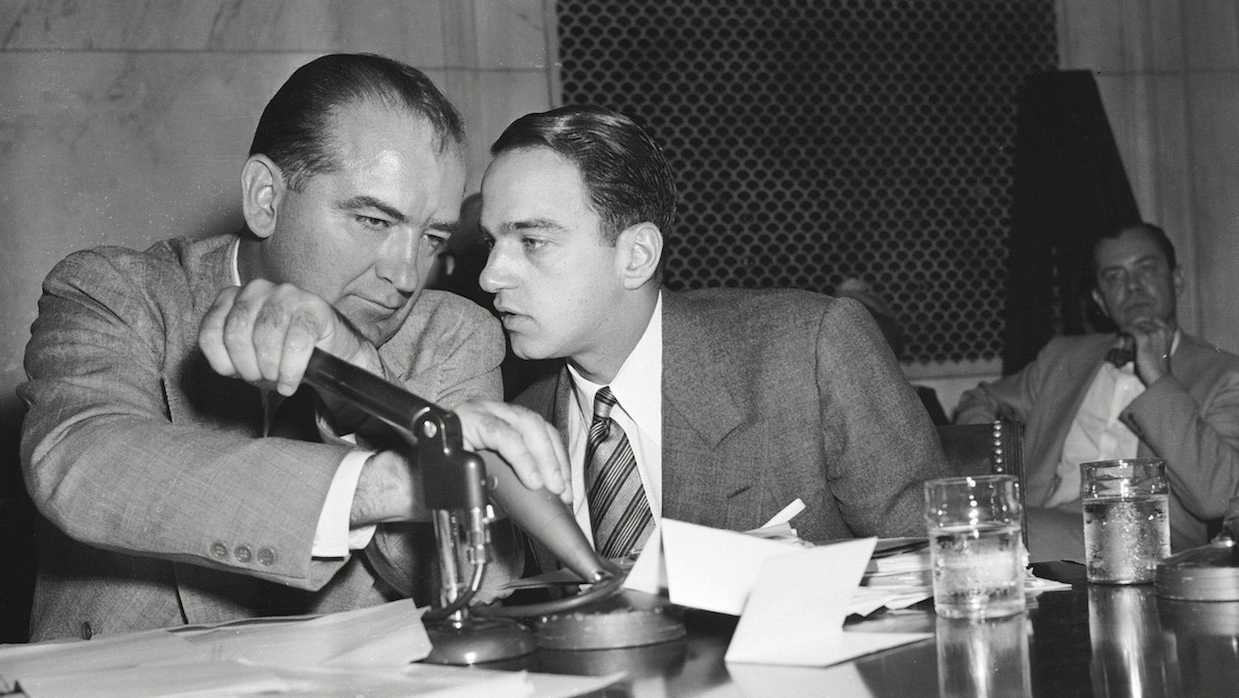 Back to selection
Back to selection
“Treat the Material Like a Thriller”: Editor Andrea Lewis on Where’s My Roy Cohn?
 Where’s My Roy Cohn?
Where’s My Roy Cohn? Acquired by Sony Pictures Classics after its premiere at Sundance, Matt Tyrnauer’s Where’s My Roy Cohn? reexamines the life and legacy of lawyer/fixer/conservative power broker Roy Cohn. Taking its title from a quote from President Donald J. Trump, Tyrnauer’s documentary draws a line from Cohn to the present. Via email, his regular editor Andrea Lewis discussed her work on the film.
Filmmaker: How and why did you wind up being the editor of your film? What were the factors and attributes that led to your being hired for this job?
Lewis: I have worked with director Matt Tyrnauer and producer Corey Reeser on several of their films, including Studio 54, which premiered at Sundance last year. We have developed a unique working relationship that I think really came together on Where’s My Roy Cohn? I always try to think outside of the box, which was a requirement for this film, so we all knew this would be a good opportunity to team up again.
Filmmaker: In terms of advancing your film from its earliest assembly to your final cut, what were your goals as an editor? What elements of the film did you want to enhance, or preserve, or tease out or totally reshape?
Lewis: The directive was to treat the material like a thriller. So, the goal throughout editorial was to come up with creative and evocative ways to convey the complexities, contradictions and power of Roy Cohn. We didn’t want to make a traditional bio film, rather one that had contemporary resonance behind every frame. As our current political situation continued to change throughout editorial, I found that certain parts of the film began to take on surprising new meanings.
Filmmaker: How did you achieve these goals? What types of editing techniques, or processes, or feedback screenings allowed this work to occur?
Lewis: I set out to reframe the archival footage so it would feel fresh, and to build scenes out of unexpected archival footage to create an experience. When you work this way, the sky is the limit to how you can imagine the scenes. Finding the right archival footage to tell a story like that took some extra legwork, but people responded strongly to those scenes, so we knew we were on the right track.
Filmmaker: As an editor, how did you come up in the business, and what influences have affected your work?
Lewis: I came up through the ranks as an assistant editor, then as an editor for various production companies editing branded entertainment and marketing for films. I edited a lot of short and long form behind-the-scenes pieces for films, which allowed me to dissect scenes and absorb how story and storytelling work.
Filmmaker: What editing system did you use, and why?
Lewis: Avid. I’ve worked on Avid for many years, and I find it to be very intuitive.
Filmmaker: What was the most difficult scene to cut and why? And how did you do it?
Lewis: I guess you could say that both the hospital scene and the boat scene were challenging, because they had to be built from imagination. These were moments surrounded in mystery, and there wasn’t any archival footage of the actual events. We had the Ken Auletta tapes and the interviews for the words, but the mood, sound and imagery had to be crafted from the ground up. This can be dicey, but I actually love these kinds of creative challenges, and they are two of my favorite scenes in the film.
Filmmaker: What role did VFX work, or compositing, or other post-production techniques play in terms of the final edit?
Lewis: We work with a wonderful graphic designer whose graphic treatments really elevate the mood and feel of the film. We have many meetings throughout the edit process to make sure everything works together. It’s always exciting to see where he takes things and how they refine the final look of the film.
Filmmaker: Finally, now that the process is over, what new meanings has the film taken on for you? What did you discover in the footage that you might not have seen initially, and how does your final understanding of the film differ from the understanding that you began with?
Lewis: When we started, I thought that, through time and research, Roy Cohn would become more clear to me. But I found him to be an ever-shifting chameleon of contradictions. He was able to read people faster than they could read him and get his way as a result. Both repulsive and mesmerizing, he was always something different from what you expected him to be.
